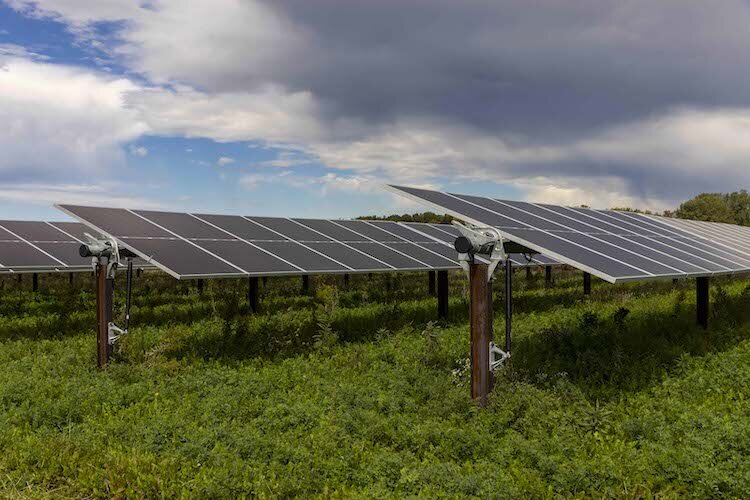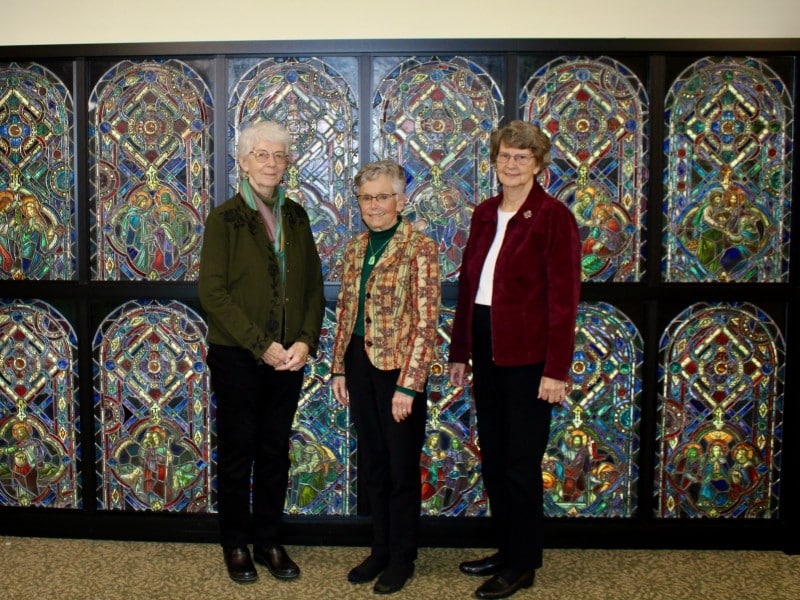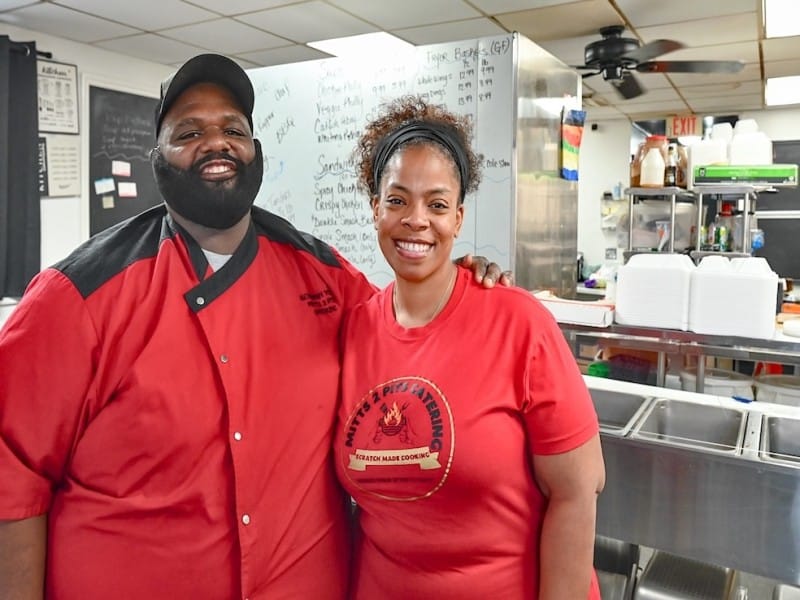Solar farming: A new kind of farm is being built on 1,000 acres in Marshall Township
The $130 million Cereal City Solar project constructed by NextEra is expected to generate $21 million in tax revenue for Marshall Township and Calhoun County and create 200 jobs during construction. It is now expected to be operational by December 2023.
Editor’s note: This story is part of Southwest Michigan Second Wave’s On the Ground Calhoun County series.
A solar farm on 1,000 acres of land in Marshall Township is expected to begin commercial operation in December 2023, says Kunhal Parikh, Project Director with Florida-based NextEra Energy Resources who is overseeing the local project.
The project – The Cereal City Solar Project – is the fourth NextEra project in Michigan. Parikh says the company has three renewable energy wind projects underway in Huron, Sanilac, and Tuscola. These projects all use turbines that generate energy. The company also completed a smaller solar project in Coldwater last year.
The Cereal City project will cost NextEra $130 million, is expected to generate $21 million in tax revenue for Marshall Township and Calhoun County, and create 200 jobs during construction. Work on the project began in October.
“They will have a job to go to for the next year that will be close to their homes,” Parikh says. “After this project is completed, we will have two to three individuals from our company who will support its operation.”
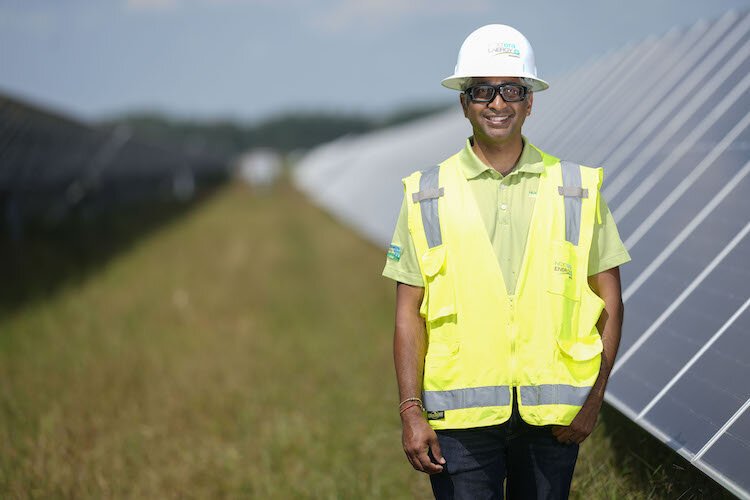
The project will have a capacity of up to 100 megawatts of clean, renewable, American-made energy, according to a fact sheet provided by NextEra.
Located near 15 Mile Road and H Drive North, the Marshall Township site is made up of multiple parcels of farmland owned by different individuals. It was selected based on its relatively flat topography and its close proximity to transmission lines, Parikh says.
Between 500 and 900 acres of the site will house solar panels. The perimeter of the property will contain native species of vegetation planted by NextEra for screening and will preserve existing vegetation as much as possible to provide a visual buffer around the project, according to plans submitted to the township. The site plan also says “breaks or gaps in wildlife movement corridors” will be minimized to protect local wildlife and preserve natural ecosystems.
“We really work closely with all of our consultants, both locally and those throughout the country, to identify wetlands or subsurface conditions and protected species or wildlife that occupy the area under consideration,” he says. “We do a large charette to ensure that these sites are feasible. We want to be located near existing transmission lines or infrastructure. All of that takes years. We have people on the ground observing situations for countless years.”
These sites, he says, are often owned by those who want to continue farming, but may not have any family members to take it over. “They are willing to sell generational farms because no one is there to take it over,” Parikh says.
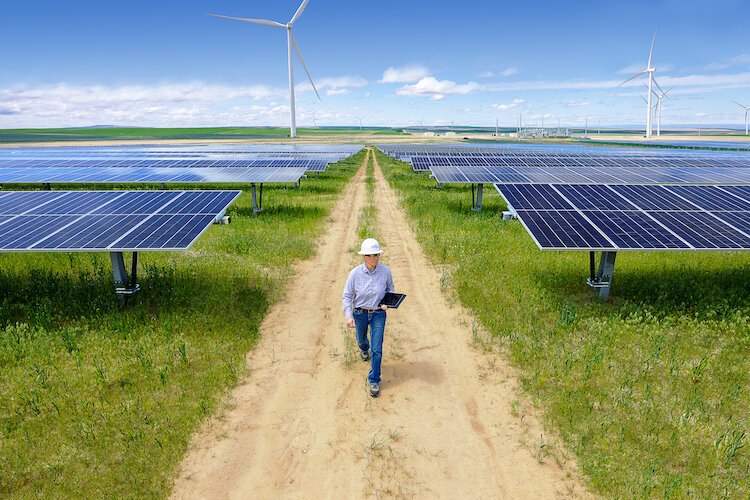
Along with the work that goes into selecting a site there is the establishment of close working relationships with governmental officials in the municipalities where these sites are located.
NextEra has projects in 38 states, including Michigan. Parikh says each state has different requirements. Michigan is quite unique because there are very localized controls on permitting, he says.
“The issue I see when we talk about a large project like this is that we want to have the right individuals reviewing it. There are a lot of rules and regulations in a lot of townships that don’t make sense in our view that have been put in for prohibitive purposes,” Parikh says. “We see in many states that many of these siting procedures went up to the county or state level. Review experts in the industry make sure that we’re meeting that compliance. We have to work closely with township and county counterparts to meet or exceed any requirements set forth.”
Parikh says his company works closely with stakeholders to see the big picture of what these projects will look like and mean to the municipality.
“Township officials are scared because there are a lot of moratoriums and referendums put in place for solar initiatives. There are a lot of recalls. If you have a vocal minority speak out loudly based on mistruths, that can be damaging,” he says.
The Cereal City Solar Project ran into opposition from a group calling themselves Concerned Marshall Township Residents and Calhoun County Citizens, who took out a full-page ad in a local newspaper in October in opposition to the project. This was several months after the township’s Planning Commission approved a special use permit and site plan during a meeting in early February.

Parikh says the opposition most often comes from individuals who don’t want to see wind turbines or solar panels in their communities.
“A lot of times fear takes hold and it becomes an angry mob mentality,” he says. “We want to listen to them and understand their concerns. Change is always difficult, but once we start putting together plans and working with them that opposition goes away,” he says.
The Cereal City Solar Project already has an agreement in place with Consumers Energy, which will buy electricity from the facility for at least the next 25 years. The utility provider sets the rates for customers.
The agreement is part of Consumers Energy’s plan to add 8,000 megawatts of utility-scale solar power by 2040, including 1,100 megawatts by 2024. The solar developments are part of the company’s Clean Energy Plan to eliminate coal as a fuel source for electricity by 2025 and achieve net-zero carbon emissions by 2040.

“Increasing clean energy for our customers shows our commitment to being a force of change for clean energy that benefits the people of Michigan and protects our planet,” says Dennis Dobbs, Consumers Energy’s vice president of enterprise project management and environmental services, in a press release. “Our partners in these projects are helping us transform the energy landscape.”
Consumers Energy’s focus on clean energy also is a focus for the State of Michigan.
In September 2020, Governor Gretchen Whitmer committed Michigan to achieve economy-wide carbon neutrality no later than 2050. The goal includes interim reductions of 28% by 2025; 52% by 2030; and maintaining net negative greenhouse gas emissions (GHG) after 2050. These benchmarks are contained in the MI Healthy Climate Plan, unveiled in April.
“Renewables provided about 11% of Michigan’s electricity net generation in 2021, and wind energy accounted for three-fifths of that power,” according to the U.S. Energy Administration. “Michigan ranks among the top 15 states in the amount of electricity generated by wind energy.”
A new community partner
Solar farms typically operate for between 25 to 30 years which is the life expectancy of the solar panels. Owners of the property where these operations are located enter into a year-to-year lease with NextEra. Parikh says the amount landowners are paid is between his company and the landowner. The property owner has the option of taking the land back for farming or other uses when discussions begin regarding replacing or permanently removing the structural steel beams and the panels on top of them.
“Those structures are replaced or removed at our cost,” Parikh says. “The ground is still being maintained with these landowners. We work with landowner partners to make sure they agree to what we want to do. This gives the land time to rest and it will be better if the landowner wants to use it for farming.”
The lifespan of these projects creates a long-term commitment from NextEra to the communities they are in. Parikh says as a whole the communities in which they develop projects benefit from added resources to their schools, upgrades to existing infrastructure, and various philanthropic efforts – all without increasing millage rates.
As an example, he says they will work with Kellogg Community College to provide training and apprenticeship opportunities for students who want to work in the clean energy sector. NextEra recently donated two smart grids to KCC for “training the next generation of technicians.”
Parikh says while some might refer to solar and wind energy as the wave of the future, he says that wave has been here since the 1950s, and won’t be going away.
Unlike coal and natural gas, which are limited resources and with prices often dictated by market sources overseas, Parikh says wind and solar operate under naturally occurring conditions
“Solar could generate 30, 40, or 100 percent of the energy needed. For wind, it depends on how much wind is blowing. If it’s too fast or too slow calculations made by engineers are put in to make sure turbines aren’t running too fast or slow. Extended power is generated past the time those weather events occur. I see the entire country having opportunities for wind and solar.”

